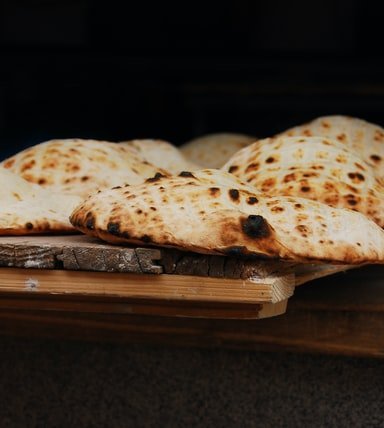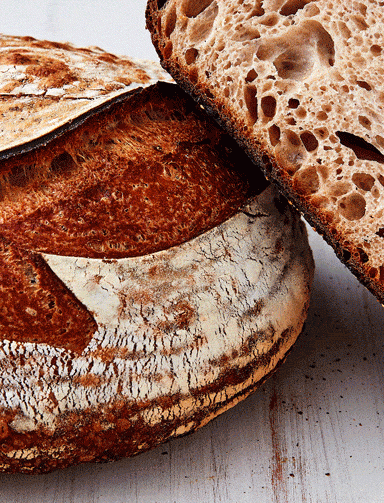Bread, the most common food for Western populations, exists in multiple varieties. Depending on the flours with which it is kneaded, the final result changes in terms of nutrition, beneficial properties, texture, and adaptability to certain diets.
For example, corn or buckwheat bread is also suitable for people with intolerances or sensitivity to gluten or celiac disease, while white, wholemeal, or spelt bread is not suitable. In the preparation of bread, homemade, artisanal, or industrial, it is possible to add various ingredients to the dough. Among these, in addition to cereals and seeds that enrich the flours, there are also potatoes.
You can prepare potato bread using not only boiled tuber but also mashed potatoes or replacing part of ordinary flour with potato starch or potato flakes. Either way, potatoes increase the overall nutritional value, making it comparable to whole grain bread for fiber and nutrients like zinc and iron.
Potato bread has about the same calories and protein as common bread but provides much more potassium than white or whole grain bread.
Although potato bread is a good source of folate, it contains about the same amount as white bread. But it provides much more folate than whole grain bread unless whole grain bread is enriched with folic acid.
Folate and folic acid work the same way, but folate is the natural form, while folic acid is used in supplements. Folate activates many metabolic activities, including those that synthesize DNA and proteins. It also helps produce a substance called S-adenosylmethionine, or SAMe, which helps produce neurotransmitters.
The history and creation of the potato bread
The “Kriegskastoffelbrod”, or K bread of the Germans, that is, the potato bread that has been talked about so much lately, is not a German invention. The Germans have not done more than to put into practice the indications of Parmentier, the introducer of potato cultivation in Europe.
It is believed that the first recipe was squared up by Antoine-Augustin Parmentier – a famous French pharmacist and agriculturist who promoted the potato as a “poor man’s vegetable”. Soon it became a norm to add potatoes to flour. Antoine – Augustine Parmentier is also credited with introducing various vegetable ingredients in bread preparation. Parmentier used potato pulp or starch for preparing bread. Various recipe variants were propagated by culinary authors.
During the 18th century, France was subject to a lot of famine, especially during the wars. And that’s when Antoine Parmentier, a successful apothecary, started to work on the potato to find a solution to feed the people.
Parmentier had experienced first-hand the nutritional value of the potato while a prisoner of war in Germany, and on his return to France he campaigned vigorously for its adoption as a useful ‘bread for the poor’ – the word ‘bread’ in this instance being a metaphor for food generally.
Potatoes soon became a common addition to actual bread dough, of course – as we considered yesterday – its value here being to reduce the amount of expensive or scarce grain needed to make up a particular quantity.
A potato bread recipe developed by Parmentier himself in about 1778 is quite unusual in that it contains no flour at all. It must have been very dense indeed.
He discovered many proprieties in it like the starch. To promote the potato in Paris, he decided to have a meal with eminent figures like Benjamin Franklin or Antoine Lavoisier. He cooked many dishes using potato and baked potato bread. The meal came out mediocre actually, but the newspaper “Journal de Paris” stated that it was “the discovery of the century”.
Varieties of the potato bread
The appearance of potato bread differs from white or wheat bread in color. This type of bread has a light yellow color, which often makes it a standout when presented on a bakery screen. Potato bread is usually woven into a braid when sold in bakeries.
Commercially available, this type of bread can be purchased in a variety of forms. It is not the traditional bread of mold bread, which is a very popular choice, as it tends to be softer than a whole wheat bread would be. Hot dog bread and hamburger rolls are offered in a potato-based variety as well.
Homemade potato bread recipes vary greatly. There are those recipes that require fresh mashed potatoes, while others mention the use of potato flakes. Others combine both potatoes and dried flakes to produce their final result. These recipes created specifically for use with a so-called bread machine just for dry flakes, such as adding mashed potatoes would create a problem in the fermentation process.
Potato bread around the world
As the potato has been a staple in Ireland’s culinary tradition, potato bread is very common and has many different forms.
Known in Ireland by its common name of tatie bread, it is made in a number of different ways. The heavier, the denser bread uses a recipe that requires the addition of oatmeal along with potato flour. There is also a popular Irish potato bread that contains a sweetened apple filling in its center.
Peru, Ukraine, and Germany have native bread to the traditional recipes of their country that feature potato-based bread.
The Cherokee Indians also have a bread that uses sweet potatoes instead of the standard white potato.
Potato bread is popular all over the world in its many and varied forms. It is as different from bread to bread as the people who do it.
Potato bread is wheat bread
Wheat bread, especially those in a basic yeast recipe, may lack flavor and texture. Which is fine, we are not snobs here. We love some basic yeast bread! But we also like to dress them up a little bit whenever we can. Having some simple ingredients like oil, dairy, or potato flakes can really help improve the taste and texture.
This is especially true if you want to avoid dry bread or bread that dries quickly.
Potato flakes are a very simple ingredient to have on hand to work with, as they can be found in almost any grocery store. If you’re not sure what it is, think of an instant blend of mashed potato. I’m still not sure, you can see it here (the link takes you to Amazon). Or you can simply bake or boil potatoes and use them in your dough as well. Just be sure to write down if your prescription requires the potato to be warm or cold when you use it.
But potatoes are not superior to other ingredients commonly used to enrich bread. At least not when it comes to texture and taste. We found that they are very similar to the use of dairy products and oil. And, to be honest, many potato bread recipes also include oil and dairy.
What really ends is a basic wheat bread that is almost the same as other wheat bread with four significant differences: fiber, protein, phosphorus, and sugar content. Potato bread provides more fiber and protein per serving while keeping the rest of the nutrients and calories normally found in wheat bread relatively equal. Apart from sugar and phosphorus, it is significantly lower in most white bread.
Nutrition of potato bread
An average slice of potato bread will provide about 80 calories, 4 grams of protein, and 2 grams of fiber. White bread, on the other hand, maintains the same amount of calories (approximately) but provides half the protein and fiber content.
One might be prone to think that this makes potato bread a healthier choice. But that’s not necessarily the case. This has to do with the sugar content found in potato bread. The sugar content is almost 3 times higher in potato bread than in normal white bread, with about 4 grams per slice.
If that doesn’t seem like much, consider that the average cookie has about the same amount of sugar. I’m not here to judge, you boo. I mean, I have a bread blog. I eat bread and write about it for a living. I am not in a position to judge. But, it’s something to consider if you’re interested in the healthiness of potato bread.
However, the biggest difference is in the phosphorus content. This is where potato bread is a clear winner, as it has so much more. That’s good news, as phosphorus is great for tooth and bone health and also partners with proteins to play a role in cell repair. Simple white barely moves the scales to 25 mg, while potato bread reduces almost 120 mg of phosphorus per serving. Take that white bread!
Can potato bread be gluten-free?
Yes, potato bread can be gluten-free, but it usually refers to bread made with potato flour or a gluten-free flour mixture (no wheat grain is used). It’s a gluten-free twist on classic potato bread. In that sense, it is like many other gluten-free recipes that replace other varieties of wheat bread.
Did you know that…
Many choose to often eliminate potatoes from the diet because of their energy intake. In fact, if consumed as a substitute for cereals and legumes (the other two sources of starch in the diet), while maintaining the same portion, potatoes contribute to a significant decrease in the overall caloric balance.
There is a long debate about their excessive glycemic-insulin index, but this is an erroneous consideration. In fact, this characteristic, in addition to subordinating to the criterion of glycemic load, changes significantly according to the cooking method and the general composition of the meal. So it is useful to prefer fat-free cooking and combine potatoes with foods with a low glycemic load.




